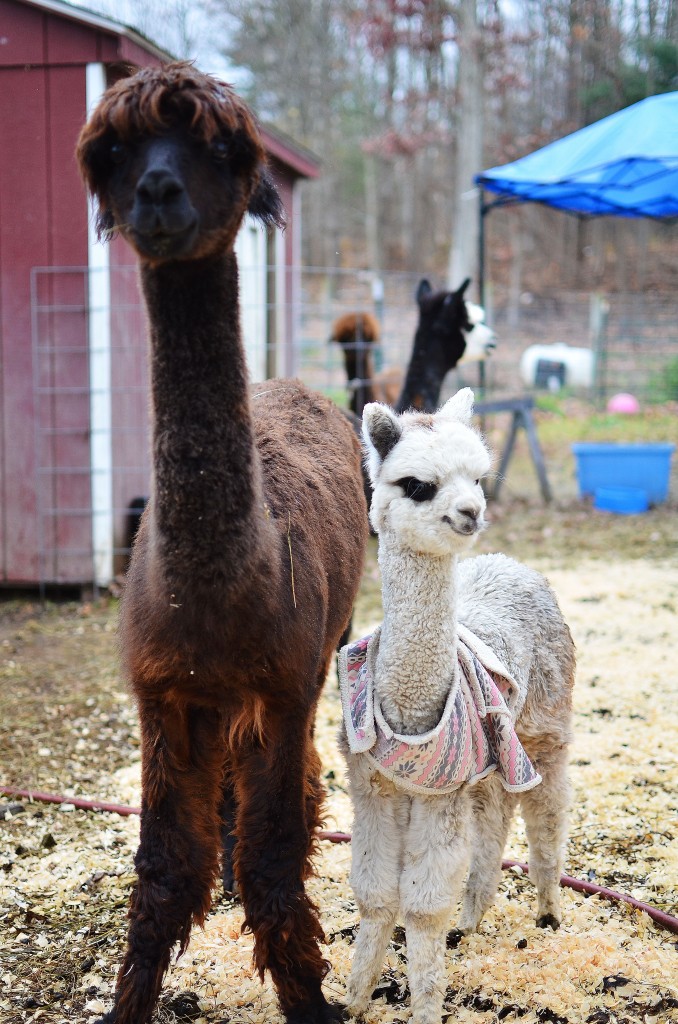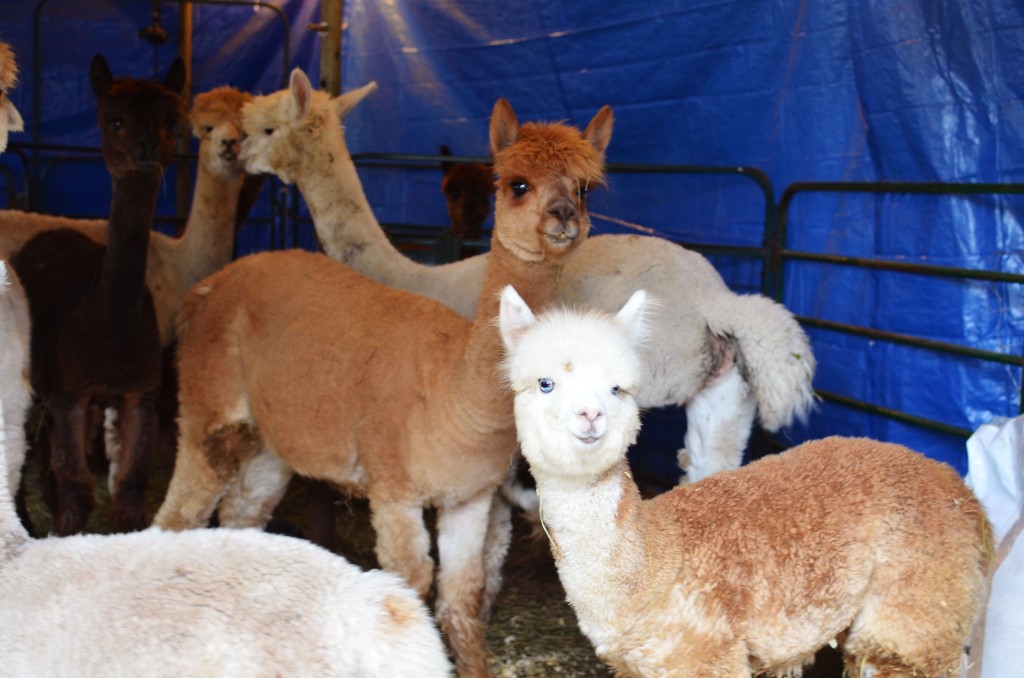
Even if you haven’t been in one of their classes, you might have heard about the Merriwethers, the husband-and-wife professors in Binghamton who work with a herd of funny looking farm animals. Aside from teaching college students, the Merriwethers also raise alpacas.
To learn about the Merriwether lifestyle, I visited Dr. David A. Merriwether in his lab in the Science III building. Yes, the lab looked like something out of CSI. Yes, it was cool. No, I didn’t touch anything.
The Merriwethers call their grand alpaca estate Nyala Farm.
“[My grandfather] used to say it was a Native American word for ‘old broken down barn,’” Merriwether said. But the name of the farm actually stands for New York (ny) and Alabama (ala), after the respective places his grandparents are from, who christened their own Nyala farm back in the day.
Okay, makes sense. But why, of all creatures, alpacas?
“We wanted to raise something that we didn’t have to kill to utilize,” Merriwether explained. Because of their soft, bountiful fleece, they are worth more alive than dead.
The Merriwethers moved to Binghamton from the University of Michigan at Ann Arbor in 2003, bringing eight alpacas with them. Today, they have 80.
“We make and sell things from their fleece, from their wool,” Merriwether said. “We show the alpacas in shows and we sell them.”
While Merriwether is an anthropologist, he and alpacas actually go way back. The South American camelids were always in his peripheral vision, even during his dissertation on genetic variation in South American Indians. He spent time in Chile and Peru while working on his collections, the alpaca motherland. He got better acquainted with them later on.
“I was at the University of Michigan and I had one of the few ancient DNA labs in the world,” Merriwether said. “So people would come to train with me. I had students come from Chile who wanted to learn how to work with ancient DNA, and one of them … wanted to work on camelids. So he brought all these bones from guanacos and vicuñas and alpacas and llamas, and I taught him how to extract DNA from them, how to work with ancient DNA.”
Merriwether got acquainted with alpacas in the flesh, and not just the DNA, while in Michigan during a parade.
“There were some local clubs, 4H [youth development] groups that had alpacas and llamas and they were walking them in a parade, and [my wife and I] said, ‘Those are cool, what are they? They’re really funny looking Dr. Seuss-looking things.’” So the Merriwethers did research and learned that they could make money breeding, selling and shearing them. They also thought these profitable Dr. Seuss-looking things could provide a wholesome family activity for them and their two daughters. They bought three females and two males. So began the legacy.
The Merriwethers also use their alpacas for genetic research. Juan Carlos Morin, who is now a professor in Argentina working on camelid genetics, inspired Merriwether to start thinking about alpacas in a different way while he was a student in his DNA lab. Instead of studying alpacas just to glean their benefits to humans, he began to study them on their own terms. He noticed that in the wild, alpacas don’t have very much fleece, yet humans have turned them into cuddly animals that produce 20 pounds of fleece a year.
“I became very interested in how things became domesticated at that point,” Merriwether said. “So I study the origins of domestication of anything that makes clothing.”
The DNA analysis skills Merriwether used to study humans were still useful when studying animals.
“I learned all my skills from studying humans, but DNA is DNA,” he said. “So the skills I learned have made me uniquely positioned to study some of these species that not many people were looking at.”
So it seemed inevitable that within the first couple years of owning alpacas, Merriwether started collecting samples from his herd. By 2003 he set up a gene bank for camelids. He’s contributed to the alpaca genome project, where the entire genome of a single alpaca was sequenced. It was one from his herd.
Merriwether’s study of alpacas still pertains to humans, though. He’s studying choanal atresia, a defect that “means you don’t have an opening in your cheekbones that lets you breath from your nose to your lungs,” Merriwether said. “Humans get it too, but it’s much rarer for us than for alpacas.” According to Merriwether, drug companies contribute few resources to the defect because there’s little promise of financial gain.
“They call them ‘orphan drugs,’” Merriwether said about these rare human afflictions. Today he is working to help these people whose suffering is otherwise overlooked by large medical industries.
“Maybe what causes it in alpacas is what causes some of those in humans,” he said. “So alpacas may be the best animal model for choanal atresia in humans.”
Because their daughters are going away to school, the Merriwethers are downsizing their farm.
“I’m losing my labor force, so we’re gonna probably downsize the herd quite a bit, get it down to something like 30 animals. We’ve been selling them,” Merriwether said.
But their daughters aren’t the only people who can help on the farm. Binghamton vet students come to Nyala farm every month to help with alpaca health and vaccinations for veterinary experience. Merriwether also has a few students who come and help do chores on the farm “because they’re nice.” They might also do it because alpacas are fun to look at.



